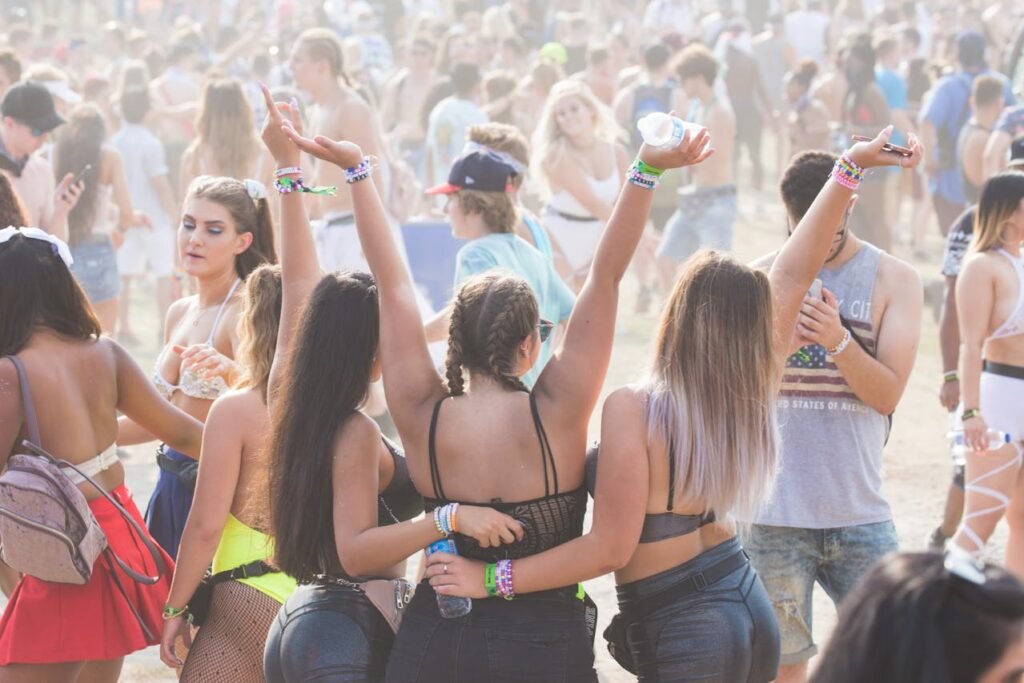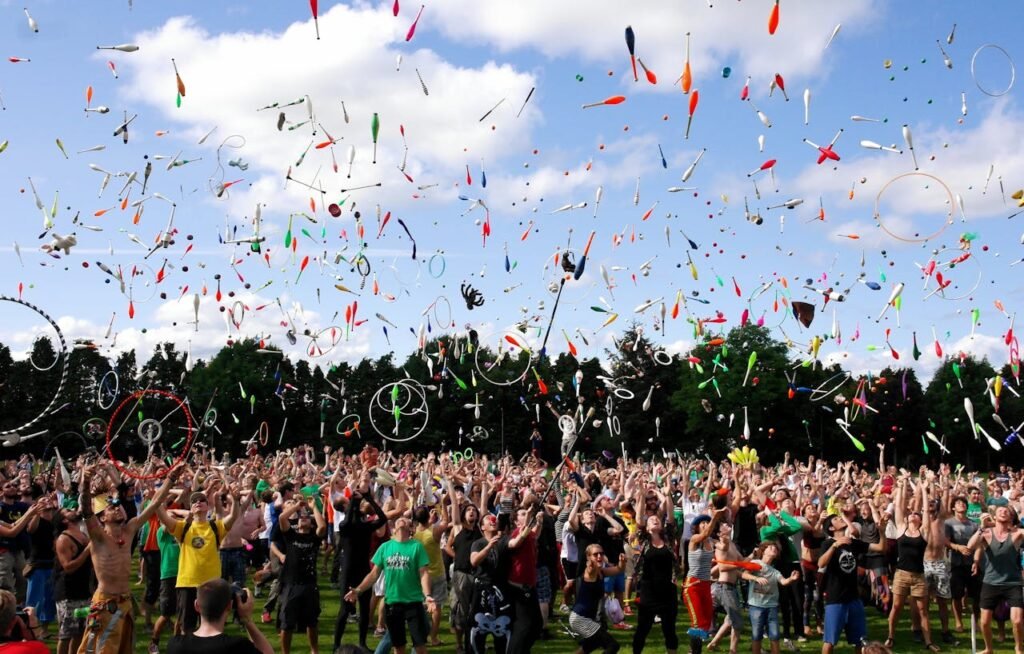More than a celebration, festivals can be seen as a strong demonstration of culture, history, and community. International festivals all around the world give people a chance to have a glimpse of how different societies live their lives and what they believe in, and how these people express their creativity. We invite you to travel on a trip to some of the most fascinating and interesting festivals in the world in this blog post, and discover more about them and why they are important in linking people despite their cultures.
Introduction
The world is a quilt of societies, all having their own customs, beliefs, and means of enjoying life. The international festivals knit these cultures together and give a glimpse of the soul of a community. Be it a tomato battle in Spain, the glow of lanterns in Asia, or an African drum, festivals have no barriers and unite people in one celebration.
Over continents, in this post, we are going to take a look at some of the most interesting international festivals to see what makes each of them so special and how they are connected to us in a more united world.
The Importance of Festivals in Cultural Exchange
The festival does not merely mean happy times; without it there will be no cultural exchange. They also uphold ancient traditions, bring unity, and give people a chance to learn to understand each other. A trip to another country to visit a festival can become life-changing, changing the impression and breaking the stereotypes.
Festivals speak values and stories through music, dance, food, and ritual, which could otherwise be buried. They remind all of us that we all have the same need: to find joy, connection, and meaning regardless of our differences.

Festivals of Europe as Icons
La Tomatina (Spain)
La Tomatina is the largest tomato battle in the world that is hosted yearly in the town of Bu There is an event called the tomato-throwing fest, which brings thousands of people yearly to the streets to throw tomatoes on top of each other, turning it red. It all started as a local food fight in the year 1945, but it is now known to be a mark of merriment, bonding, and going out of control.
Oktoberfest (Germany)
The October feast in Munich is the greatest festival of beer in the world; every year it gets millions of visitors. In addition to the well-known beer tents, the Oktoberfest also presents the Bavarian heritage in delightful costumes, music, and copious food. It is a feast of culture, welcome, and merriment.
Scotland- Edinburgh Festival Fringe
Edinburgh Festival Fringe is the biggest arts festival in the world, with the capital city of the country turning into a theater, comedy, dance, and music platform. It has a melting pot of artists who come there to create and innovate no matter where in the world they are.
Colorful Festivals in Asia
Diwali (India)
The Festival of Lights is also known as Diwali, and this is to show the triumph of light over darkness and good over evil. Households of families use lamps to light their houses, exchange sweets, and light fireworks. A period of reflection, rejuvenation, and socializing.
China: The time of the Chinese New Year (Chinese New Year)
The Chinese New Year, or the Spring Festival, is a holiday that starts the lunar new year. Festivities involve festivals of lantern making, family feasts, and dragon dances. The entertainment is heavily symbolic and concerns luck, prosperity, and also family togetherness.
Harbin Ice Festival (China)
The Harbin International Ice and Snow Sculpture Festival turns the Chinese city into an ice fairytale. Visitors comprising people from all over the world come and are fascinated by huge ice sculptures that are lit in bright colors. It is a testimony of the human spirit fueling creativity and adaptability to the cold winter.
The Americas: The Colorful Traditions
Carnival (Brazil)
The Brazilian Carnival is a glamorous samba, costume, and parade. Carnival is a celebration that is synonymous with both African and European cultures, where people celebrate festively before Lent. Rio de Janeiro is full of music, dance, and color as people riot in the streets.
Mexico’s Dia de los Muertos
Day of the Dead is a sweet festival that celebrates departed people. Families make altars, adorn graves, and eat special foods. Not at all morbid, it is a celebratory statement of belief in life and memory, mixing native and Catholic ceremonies.
Canada Calgary Stampede
The Calgary Stampede is a ten-day festival also known as the greatest outdoor show on Earth that honors the western tradition of Canada. Rodeos, concerts, and chuckwagon races attract people from around the world and introduce them to the cowboy culture and hospitality.
Africa’s Unique Gatherings
Timkat (Ethiopia)
Timkat, or Epiphany, is one of Ethiopia’s most important religious festivals. It commemorates the baptism of Jesus in the Jordan River. Colorful processions, music, and ritual immersions in water create a powerful sense of community and faith.
Lake of Stars (Malawi)
Set on the shores of Lake Malawi, the Lake of Stars Festival is a celebration of music, arts, and culture. It brings together local and international artists, fostering cultural exchange and showcasing Malawi’s vibrant creative scene.
Fes Festival of World Sacred Music (Morocco)
Held in the ancient city of Fes, this festival brings together musicians and spiritual leaders from various faiths. Through music and dialogue, it promotes peace, understanding, and the shared human search for meaning.
Oceania’s Cultural Showcases
Sydney Mardi Gras (Australia)
The Mardi Gras in Sydney is among the world’s largest celebrations of LGBTQ+. People from all over the world stream to the parade, which is a remarkable show of pride, diversity, and inclusion. It is an equality and self-expression festival.
New Zealand Pasifika Festival (New Zealand)
The show in Auckland is the Pasifika Festival. It is the colorful display of the rich heritage of the region and a testimony to the multicultural identity of New Zealand, and it features traditional performances, food, and crafts.
The Role of Festivals in Building the Global Understanding
International festivals have a significant role to play as far as global understanding is concerned. They lead to the chance to live other types of life, to overcome some prejudices, and to create empathy. When we enter festivals of another culture or learn about festivals of some other culture, we get a clue about the core values of people elsewhere.
Tourism and economic growth are also promoted through festivals, which help nourish local people and artists. They are living examples that, notwithstanding different experiences we have had, we can unite in a celebration and respect each other.

Tips for Experiencing International Festivals
- Do Your Research: Learn about the history, customs, and etiquette of the festival you plan to attend.
- Respect Local Traditions: Dress appropriately, follow local rules, and be mindful of cultural sensitivities.
- Engage with Locals: Don’t just observe—participate! Talk to locals, try traditional foods, and join in the festivities.
- Stay Safe: Festivals can be crowded and lively. Keep your belongings secure and be aware of your surroundings.
- Capture the Moment: Take photos, but always ask permission before photographing people, especially during religious ceremonies.
- Be Open-Minded: Embrace new experiences, even if they seem unfamiliar or challenging.
Conclusion
From the streets of Rio to the temples of India, international festivals are a testament to humanity’s creativity, resilience, and joy. They remind us that, no matter where we come from, we all seek connection, meaning, and celebration. By exploring these festivals, we not only enrich our own lives but also contribute to a more understanding and harmonious world.
So, the next time you hear about a festival in a far-off land, consider joining in. You might just discover a new perspective—and make lifelong friends along the way.
Table: Major International Festivals at a Glance
| Festival Name | Country | Best Time to Visit | Key Highlights |
|---|---|---|---|
| La Tomatina | Spain | August | Tomato fight, street parties |
| Oktoberfest | Germany | September-October | Beer tents, Bavarian culture |
| Edinburgh Festival Fringe | Scotland | August | Theatre, comedy, arts |
| Diwali | India | October-November | Lights, fireworks, family gatherings |
| Chinese New Year | China | January-February | Dragon dances, lanterns, feasts |
| Harbin Ice Festival | China | January | Ice sculptures, winter activities |
| Carnival | Brazil | February-March | Samba parades, costumes, street parties |
| Día de los Muertos | Mexico | November | Altars, skulls, family remembrance |
| Calgary Stampede | Canada | July | Rodeos, concerts, western culture |
| Timkat | Ethiopia | January | Religious processions, water rituals |
| Lake of Stars | Malawi | September | Music, arts, lake setting |
| Fes Festival of World Sacred Music | Morocco | May-June | Sacred music, interfaith dialogue |
| Sydney Mardi Gras | Australia | February-March | LGBTQ+ parade, parties, performances |
| Pasifika Festival | New Zealand | March | Pacific Island culture, food, arts |
Frequently Asked Questions (FAQ)
1. Why are festivals important in different cultures?
Festivals preserve traditions, strengthen community bonds, and provide opportunities for cultural exchange. They allow people to express their identity and values through shared celebrations.
2. Can tourists participate in international festivals?
Yes! Most festivals welcome visitors, but it’s important to respect local customs and participate in a considerate manner.
3. What should I pack for attending a festival abroad?
Pack comfortable clothing, weather-appropriate gear, and essentials like a camera, reusable water bottle, and a small backpack. Always check if there are dress codes or specific items recommended for the festival.
4. Are international festivals safe for families?
Many festivals are family-friendly, but some (like large street parties) may be overwhelming for young children. Research the specific festival and plan accordingly.
5. How can I find out about upcoming festivals around the world?
Travel websites, tourism boards, and event calendars are great resources. Social media and travel blogs also provide up-to-date information and personal experiences.
Ready to embark on your own cultural adventure? Whether you’re dancing in Rio, lighting lamps in India, or sampling Bavarian pretzels, international festivals await—each one a celebration of the human spirit.
